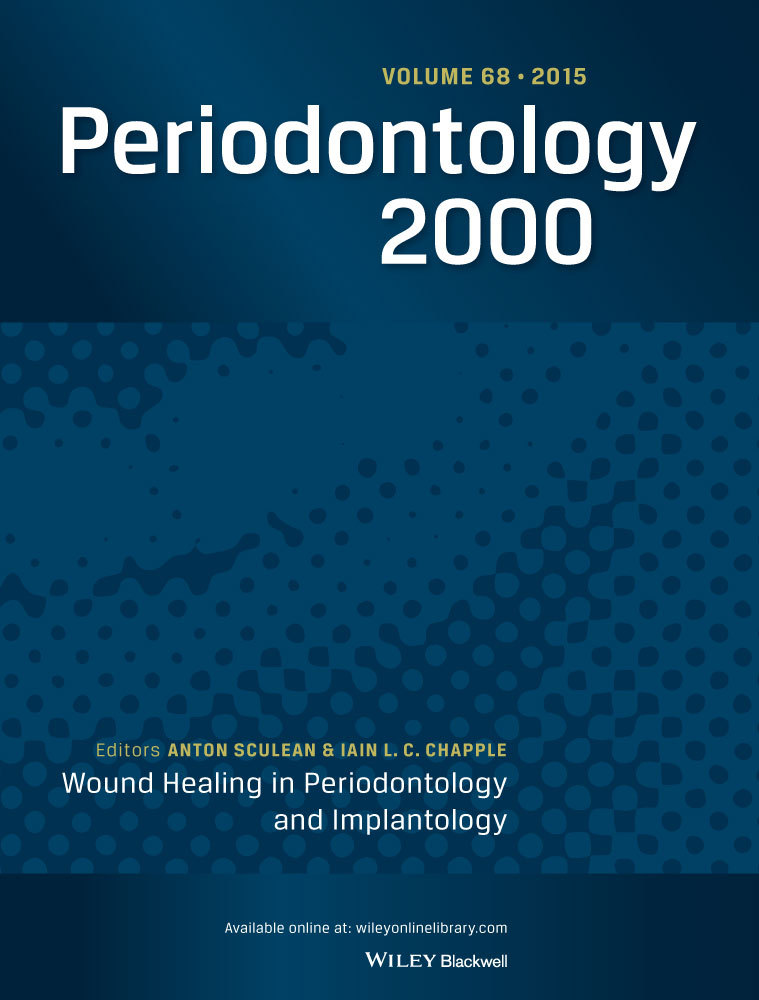Genetic risk variants implicate impaired maintenance and repair of periodontal tissues as causal for periodontitis—A synthesis of recent findings
IF 15.7
1区 医学
Q1 DENTISTRY, ORAL SURGERY & MEDICINE
引用次数: 0
Abstract
Periodontitis is a complex inflammatory disease in which the host genome, in conjunction with extrinsic factors, determines susceptibility and progression. Genetic predisposition is the strongest risk factor in the first decades of life. As people age, chronic exposure to the periodontal microbiome puts a strain on the proper maintenance of barrier function. This review summarizes our current knowledge on genetic risk factors implicated in periodontitis, derived (i) from hypothesis‐free systematic whole genome‐profiling studies (genome‐wide association studies [GWAS] and quantitative trait loci [QTL] mapping studies), and independently validated through further unbiased approaches; (ii) from monogenic and oligogenic forms of periodontitis; and (iii) from syndromic forms of periodontitis. The genes include, but are not limited to,遗传风险变异暗示牙周组织的维护和修复受损是牙周炎的原因-最近研究结果的综合
牙周炎是一种复杂的炎症性疾病,宿主基因组与外部因素一起决定了其易感性和进展。遗传易感性是生命最初几十年最大的风险因素。随着人们年龄的增长,长期暴露于牙周微生物群对屏障功能的适当维护造成了压力。这篇综述总结了我们目前对牙周炎相关遗传风险因素的了解,这些知识来源于:(1)无假设的系统全基因组分析研究(全基因组关联研究[GWAS]和数量性状位点[QTL]定位研究),并通过进一步的无偏倚方法独立验证;(ii)单基因型和少基因型牙周炎;(三)从牙周炎的综合征形式。这些基因包括但不限于SIGLEC5、PLG、ROBO2、ABCA1、PF4和CTSC。值得注意的是,CTSC和PLG基因突变也在青春期前和早发性牙周炎的非综合征型和综合征型中被发现。这篇综述中所鉴定的基因的功能表明,受牙周炎相关基因变异影响的途径集中在牙周组织结构完整性的维持和修复中。特别是,这些基因在炎症和溃疡牙周组织的愈合中发挥作用,包括纤维蛋白溶解、细胞碎片挤压、细胞外基质重塑和血管生成。包括牙周炎表型的综合征表明,中性粒细胞在牙周组织炎症的调节中起重要作用。因此,已建立的遗传易感基因共同为牙周炎的分子机制和可能的致病因素提供了新的见解。
本文章由计算机程序翻译,如有差异,请以英文原文为准。
求助全文
约1分钟内获得全文
求助全文
来源期刊

Periodontology 2000
医学-牙科与口腔外科
CiteScore
34.10
自引率
2.20%
发文量
62
审稿时长
>12 weeks
期刊介绍:
Periodontology 2000 is a series of monographs designed for periodontists and general practitioners interested in periodontics. The editorial board selects significant topics and distinguished scientists and clinicians for each monograph. Serving as a valuable supplement to existing periodontal journals, three monographs are published annually, contributing specialized insights to the field.
 求助内容:
求助内容: 应助结果提醒方式:
应助结果提醒方式:


